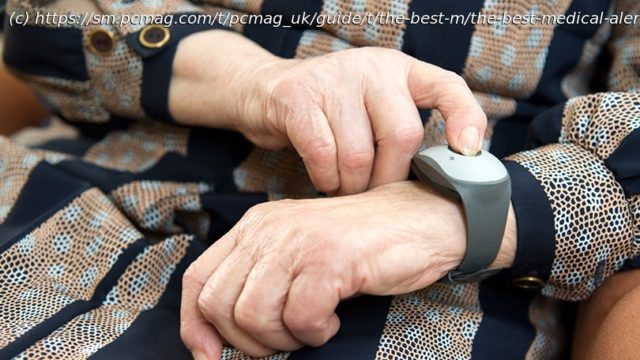A personal emergency response system can give you peace of mind knowing help is only a button-press away. Here’s everything you need to know to find the best medical alert system for yourself or an elderly family member.
Medical alert systems, also known as personal emergency response systems, offer a fast and easy way for the elderly, people with health issues, and those who live alone, to get help during an emergency, whether it be a medical issue, a fall, a fire, or any event that requires an immediate response. In a nutshell, these systems contain a help button that dials up an emergency response center and connects you to a live agent. The most basic systems use a landline and consist of a base unit and a portable help button you can wear around the house, but there are cellular options and GPS-based mobile solutions for people on the go, as well as options that automatically send an alarm when a fall is detected. Some services will even call you to remind you to take your medications. Read on to see what kinds of medical alert systems are available, and how much you can expect to pay for the service. What Equipment Is Required for Medical Alert Systems? The most basic medical alert systems use a landline telephone connection and consist of a base unit and a portable help button. They are incredibly easy to install; simply plug the unit into your phone jack using the included phone cord, and plug your phone into the secondary jack on the unit. Plug in the power cord and wait a few seconds while the system starts up, and when the LED indicator turns green, you are good to go. It’s a good idea (and encouraged by providers) to run a test by pressing the help button on the base unit to make sure everything is working. When you are connected to an agent, simply tell him/her that you are conducting a test. They will verify your name and make sure everything is OK. The base unit looks somewhat like a speakerphone and actually pulls double duty as one, but its main purpose is to connect you to a live emergency response agent without having to pick up a phone. It has a clearly marked help or emergency button, which is usually (but not always) colored red and is the largest, most easy-to-reach button on the unit. It also has a speaker and an embedded microphone for two-way hands-free communication, an LED status indicator, and a reset button that can provide several functions depending on the system. On some systems pressing the reset button will completely cancel the call to the response center, while on other systems it will silence the beeping alarm but won’t cancel the call, which means you’ll still have to speak to an agent to tell them that everything is OK. It may also be used by emergency responders to let the response center know that help has arrived. Make sure your base unit has a built-in battery backup that will allow it to operate in the event of a power outage.






